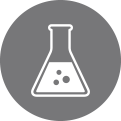In today’s challenging food production environment, it is imperative to protect products by preventing hazards that can cause food safety problems. Food safety illnesses and injuries are attributed to biological, chemical, allergenic and physical hazards, which can be mitigated with proper techniques and technologies. For physical contaminants, those measures center on advanced inspection systems that improve product safety and quality across critical control points.
As with many aspects of life and health, there are risks associated with the consumption of food. According to the U.S. Centers for Disease Control, those risks lead to 48 million incidents of foodborne illness and about 3,000 deaths a year. The World Health Organization estimates that 600 million people a year around the globe are sickened by foodborne illnesses and 420,000 die.
While it’s impossible to eliminate all food safety risks that lead to product recalls and potential consumer illness and injury, there are ways to prevent and mitigate them. One priority is identifying and reducing hazards that pose risks to the safety and security of consumable products. Those hazards span four general categories: biological, chemical, allergenic and physical. Let’s take a look at them and the steps you can take to help prevent them.
 Biological hazards
Biological hazards
Biological hazards come from potentially harmful microorganisms. These microorganisms can cause headline-making food safety illnesses such as Listeria, E. coli, Campylobacter, Clostridium Perfingens and Norovirus. To prevent or reduce the risks, from these and other biological hazards, food manufacturers take steps like pasteurization, irradiation, temperature management and stringent sanitation and hygiene practices. While the novel coronavirus isn’t a traditional foodborne pathogen, many health experts have recommended measures to prevent the spread of COVID-19 in food handling and food packaging and transport.
 Chemical hazards
Chemical hazards
Chemical hazards can come from natural chemicals or chemicals that are improperly introduced during the manufacturing process, such as cleaning substances, agricultural pesticides, animal drugs or food additives and preservatives, to name some examples. Minimizing these risks involves effective cleaning and sanitation, comprehensive employee training, proper storage and use of chemicals and the addition of chemicals that are Generally Recognized as Safe (GRAS).
 Allergenic hazards
Allergenic hazards
Allergenic hazards are linked to hundreds of product recalls a year and many food safety issues, caused by reactions to common allergens such as nuts, dairy, eggs, gluten, wheat, seafood, shellfish and soy, among others. To prevent reactions due to allergies, manufacturers must adhere to strict production and packaging techniques and accurately label their products with complete ingredient descriptions and information.
 Physical hazards
Physical hazards
Physical hazards span contaminants that can occur naturally with foods, like bone fragments in meat, and external materials, such as glass, metal, small bits of dense plastic or other items that become embedded in the food at some stage during processing, handling or manufacturing. Manufacturers can reduce the risk of physical hazards by inspecting products with advanced x-ray machines deployed at critical control points in the production and packaging process.
Inspection systems are an important part of manufacturers’ HACCP programs and help companies stay compliant with food safety regulations and safety management systems, including the Food Safety Modernization Act (FSMA) and certifications based on the ISO 22000 standard. Powerful software equipped on today’s inspection systems also provides greater traceability if questions arise about physical hazards in a product or batch.
Eagle continues to hone its inspection technologies to help food and beverage companies prevent damaging recalls and food safety issues tied to both natural and unnatural physical hazards. One example is a new detector technology featured in the RMI 400 and Pack 400 HC for poultry processors. This advanced detector technology represents a breakthrough in poultry inspection at a time of increased demand in an uncertain global market.
Another example is Eagle’s robust SimulTask™ PRO imaging analysis software, which is up to the task of preventing food safety hazards in a variety of challenging products, with image processing algorithms that provide extraordinary detail and the highest grayscale range of 65,535 values. In doughnut applications, for example, SimulTask PRO software has been used to identify small stainless steel, ferrous and non-ferrous contaminants and to conduct simultaneous quality checks for the correct amount of filling. In individual bags of chips – including metalized packages – the software led to the detection of contaminants including 2.0 mm ceramic pieces, 1.5 mm low mineral glass fragments and 0.4 mm stainless steel materials. Within the dairy industry, SimulTask PRO discovered and removed small metal pieces and gaskets in blocks of cheese that could have caused a large recall or, worse, consumer injury.
At a time of complex supply and demand situations and the need to lower the risk of vulnerabilities and recalls, advanced inspection systems protect products and manufacturers’ businesses from damaging and costly hazards.
Christy Draus, Marketing Manager, Eagle Product Inspection

.svg)


 Biological hazards
Biological hazards Chemical hazards
Chemical hazards Allergenic hazards
Allergenic hazards Physical hazards
Physical hazards